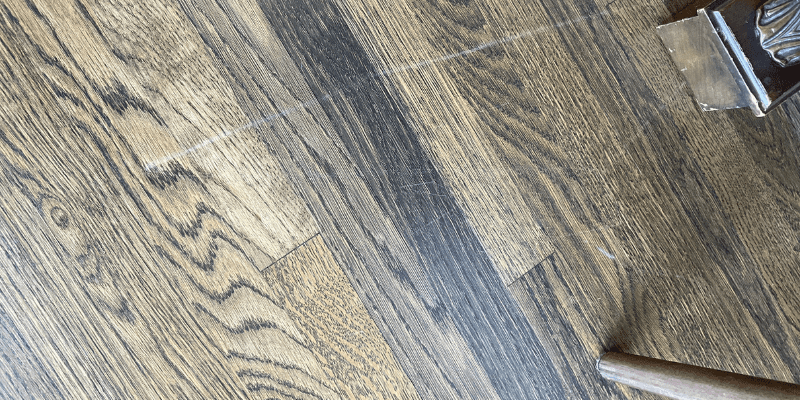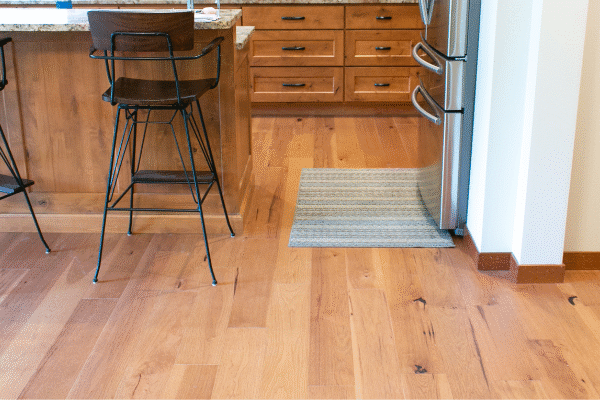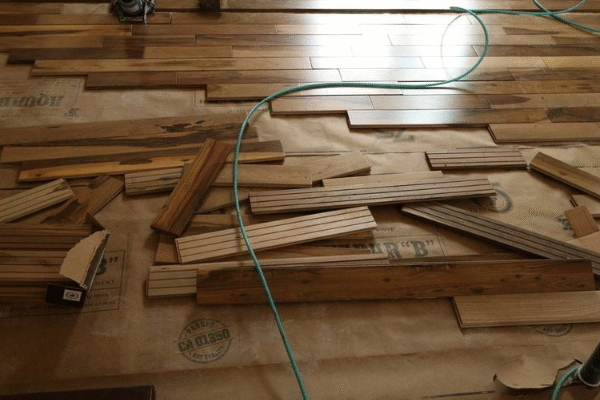From Furniture Scratches (And What to Do If It’s Too Late)
Hardwood floors are one of the most beautiful and valuable features in any home. They add warmth, character, and timeless elegance—but they’re also vulnerable. One of the most common culprits behind damaged floors? Everyday furniture.
From that oversized sectional you love to the dining chairs that get pulled out daily, furniture can leave scratches, dents, and scuffs behind if you’re not careful. As Bellevue’s trusted flooring professionals, we’ve seen it all—and we’re here to share our expert tips to prevent damage and guide you on what to do if it’s already happened.
Whether you live in Seattle, Redmond, or Sammamish, these insights will help you preserve the beauty of your hardwood floors for years to come.
The Sneaky Damage Furniture Can Do
You may not notice it at first. But over time, that coffee table you slide just a few inches every week starts leaving visible marks. Furniture legs without protection can act like sandpaper against your finish. And dragging a heavy dresser across the room? That’s a recipe for deep gouges.
Depending on your flooring type—solid hardwood, engineered wood, or even tile—damage can range from surface scuffs to irreparable cracks or dents. Luckily, a little prevention goes a long way.
Top 4 Tips to Prevent Furniture from Scratching Your Floors
1. Use Furniture Pads on Every Leg
This is the #1 rule, and one of the easiest ways to protect your floors. Adhesive felt pads or rubber caps create a cushion between your furniture and your floor, reducing friction and preventing scratching—even on high-traffic items like dining chairs.
Pro Tip: Don’t forget to check and replace these pads every few months, especially on furniture that moves often.
2. Lift, Don’t Drag
We get it—rearranging furniture feels like a seasonal ritual. But dragging a sofa or table across your floor is a fast track to damage.
Always lift furniture when moving it. Use a buddy system or sliders designed for hardwood floors if the piece is too heavy. Your floor (and your back) will thank you.
3. Know When to Call the Pros
If damage has already occurred, resist the urge to DIY the fix—especially if your floors are stained, coated with a specialty finish, or made of engineered planks. Scrubbing or sanding without the right tools or experience can worsen the damage and make the board unrepairable.
We’ve seen homeowners in Kirkland and Mercer Island attempt a patch-up job, only to need a full-floor refinish afterward. It’s not worth the risk. Call in a flooring expert like LUKS Construction to assess the situation and recommend the safest repair path.
4. Understand What Can and Can’t Be Replaced
Depending on your flooring type, not every damaged board can be swapped out. For example:
- Solid hardwood floors can usually be sanded and refinished multiple times.
- Engineered hardwood may have a thinner wear layer, limiting how much sanding it can handle.
- Prefinished boards can be tricky to match or replace due to factory-applied finishes.
If you live in areas like Issaquah or Woodinville where your floors see moisture or seasonal changes, improper replacement can also lead to warping or misalignment.
Real-Life Rescue: A Bellevue Family’s Floor Save
Last fall, we got a call from a family in Bellevue who had just moved their old upright piano—without pads, without lifting. The deep gouges in their white oak floors seemed irreversible.
They were understandably distressed, especially since the damage was right in the entryway.
After a careful in-home inspection, we recommended a partial refinishing of the damaged area with dustless sanding and a custom stain blend to match the rest of the floor. The results? Seamless, invisible, and significantly less expensive than a full replacement.
Their biggest takeaway: call a professional before trying to fix it yourself. What seems like a small cosmetic issue can become costly if mishandled.
Common Misconceptions (and the Truth)
- Myth: “I can just use a wood marker or stain pen to cover up scratches.”
Truth: These only mask the issue temporarily and can interfere with future refinishing. - Myth: “Scratches are only cosmetic.”
Truth: Deeper scratches can break the protective finish, allowing moisture in and leading to long-term damage. - Myth: “All damaged boards can be replaced individually.”
Truth: Not always. Matching finish, thickness, and wear patterns is complex—and sometimes impossible without visible seams.
Bonus Tips for Floor Longevity
- Rotate furniture regularly to prevent indentations.
- Use area rugs under heavy furniture or in high-traffic zones.
- Keep floors clean of debris that can get stuck under furniture legs and cause abrasion.
- Maintain consistent humidity (ideally between 35–55%) to prevent wood expansion and contraction.
When in Doubt, We’re Just a Call Away
Your hardwood floors are an investment—and with the right care, they can last a lifetime. If your furniture has already left its mark, don’t panic. Whether it’s a minor scuff or a deep gouge, LUKS Construction has the tools, experience, and craftsmanship to bring your floors back to life.
We proudly serve homeowners in Seattle, Bellevue, Redmond, Kirkland, Mercer Island, Snohomish, and surrounding King County areas. Our team specializes in dustless hardwood refinishing, precision board replacement, engineered floor repair, and custom finishing techniques.
📞 Need Help with a Scratch or Floor Damage?
Let us take a look—before it gets worse.
👉 www.luksconstruction.com
📞 Call for a free estimate: 425-971-2895





